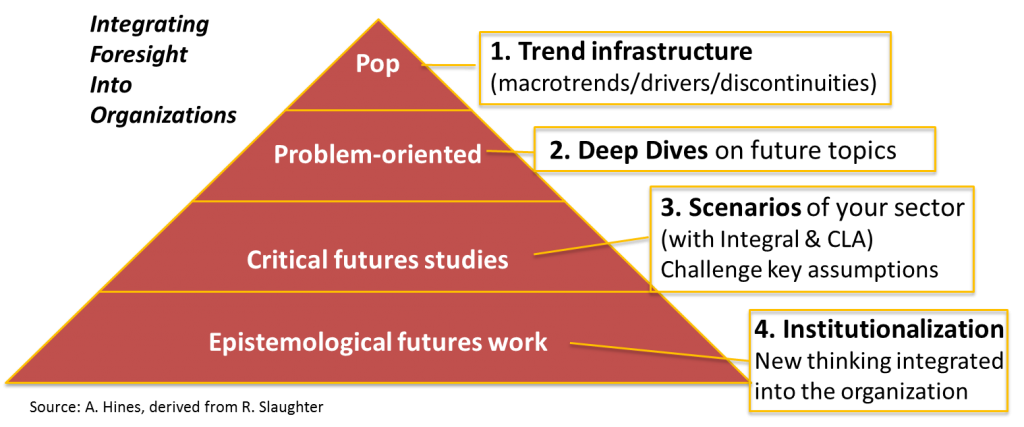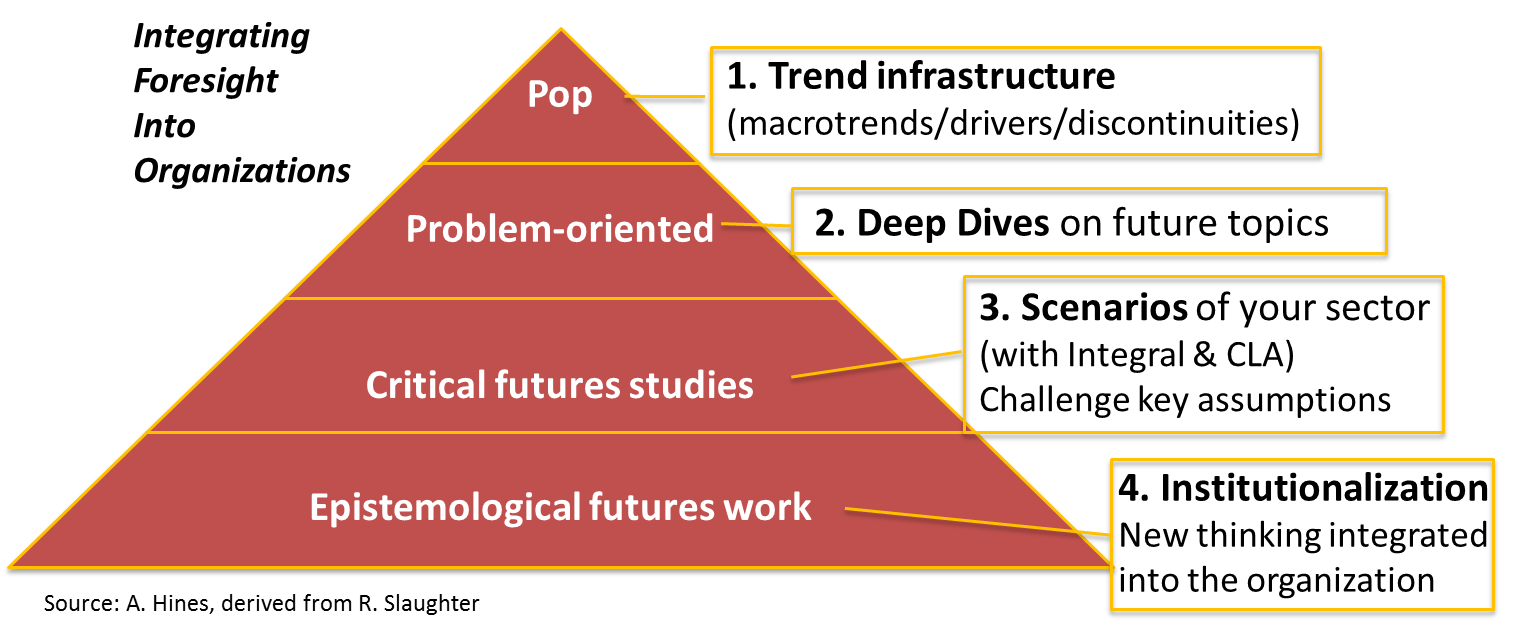Each spring in Proseminar class we explore the past, present, and future of the foresight field. It provides an opportunity for us to reflect, take stock, and think ahead about the work we are doing. My experience with this module over the years is that the students find the field’s evolution to be disappointing if not somewhat depressing. In a nutshell, the frustration can be summed up as “what’s taking so long?”
In short, we’re playing a “long game” in building foresight capacity. Even futurists can be impatient. We sometimes expect change to happen much faster than our own knowledge and experience tells us is the case. I suspect that same impatience we often experience with clients is even more magnified when we look at our ability as a field to change and grow.
Perhaps we don’t want to admit that we’re in a long game? Surely, if we got better at mobilizing we could speed up the use of foresight. One of the mantras in teaching foresight is “know your audience.” What is the climate for change in organization or industry or client group? And we adjust our approach and tools to be the best fit for that climate or prevailing conditions. We have learned that when we try to go too fast, or push too hard, we often lose them.
 The figure is a simple typical pathway for how an organization can introduce a foresight capability. The basic concept is start slow, raise awareness and build literacy, and move on to increasingly more sophisticated foresight work. My advice to an organization seeking to set up a new foresight capability is to think in terms of a five-year plan.
The figure is a simple typical pathway for how an organization can introduce a foresight capability. The basic concept is start slow, raise awareness and build literacy, and move on to increasingly more sophisticated foresight work. My advice to an organization seeking to set up a new foresight capability is to think in terms of a five-year plan.
Much as we must be patient in our work with individual clients, I think we need to be patient with ourselves as we develop as a field. As I get close to my third decade of professional futurist work, and have gotten to know countless audience and the overall climate for foresight, I have come to accept the concept of being in a long game. It may not be the most sexy message – in contrast to the Ted talks of almost magical transformations – but we are making a difference, slowly and steadily. Could we go faster? Absolutely. We need to monitor and sense the emerging future – it may tell us at some point that the conditions are right for a foresight blitzkrieg. In the meantime, while we continue to push and advocate, I hope we can also be patient and realize that we are in a long game. And as futurists, shouldn’t we be pretty good at that? – Andy Hines

Leave a Reply